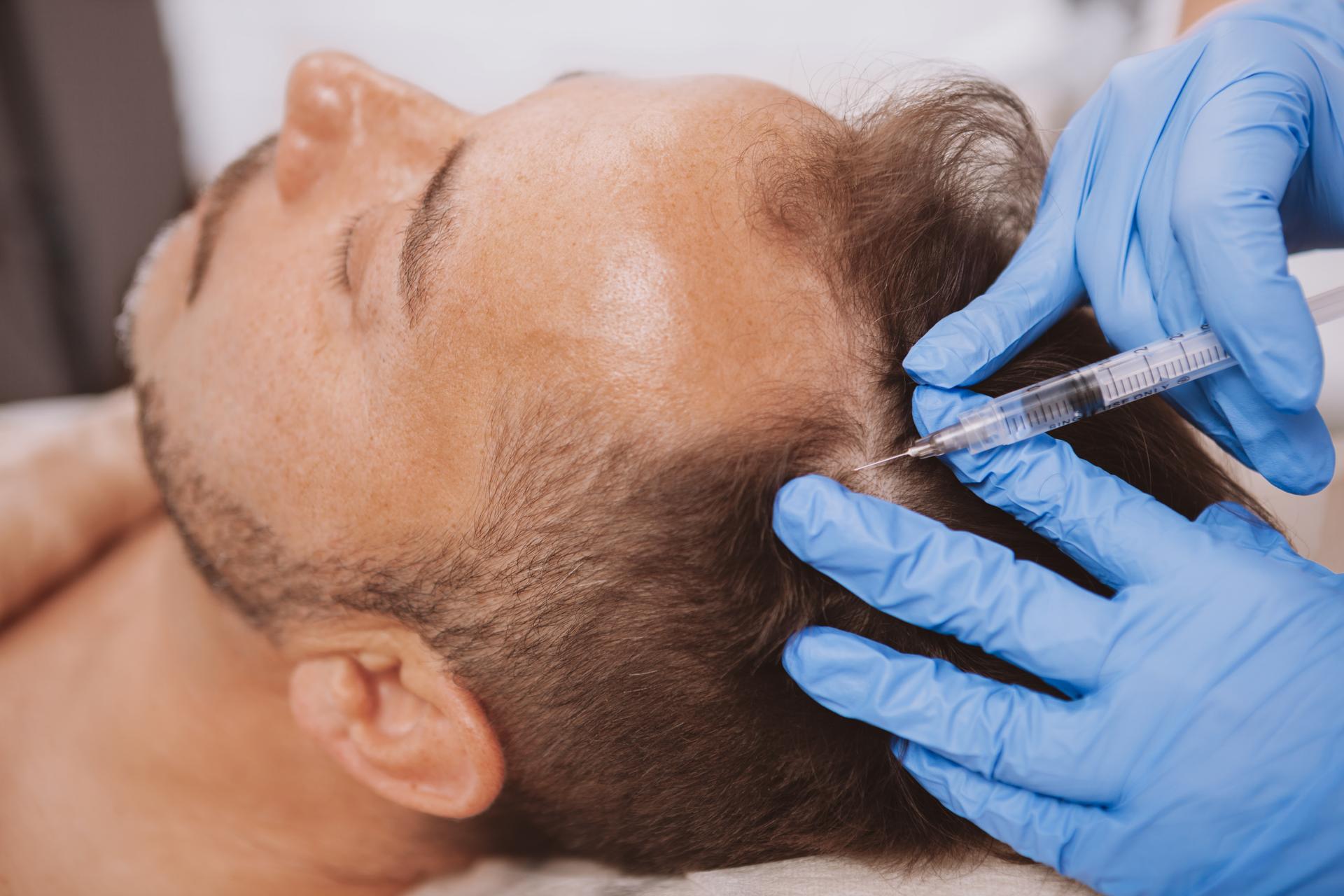Receding hairlines and losing hair is a common phenomenon among people of all ages. Stress, bad food habits, lifestyle, and pollution are all contributing factors to this. If you are suffering from hair loss, several modern cosmetic procedures can help revive your lost hair significantly.
One procedure, the platelet-rich plasma or PRP, is instrumental in treating hair loss. Another treatment called PepFactor works by stimulating fibroblasts that give your hair a new lease of life.
How Is It Made?
For preparing a PRP, a medical professional collects a blood sample and separates the platelet content by placing it in a centrifuge. The professional then extract the platelet content for administering the injection.
The PepFactor treatment, on the other hand, is an admixture of basic Fibroblast Growth Factor (bFGF) and copper peptide. It is infused into the scalp to help in rejuvenating the hair.
Effects on Hair
The chief function of PRP is tissue reparation, which is why this mode of treatment finds use in treating damaged ligaments, tendons, and muscles. Hence, PRP treatment can effectively cure hair loss caused by damaged hair follicles.
PepFactor stimulates the body to produce collagen naturally, and it does not always require injections. On occasion, professionals can also apply it as topical medicine. It has additional advantages, such as minimizing scalp scarring.
See Also: How Long Do PRP Therapy Injections Usually Last?
Impact on Hair Regrowth
Due to its tissue repairing factors, PRP effectively reverses the effects of hair loss for many people, and you can accomplish satisfactory results with consistent treatment. Your PRP consultant will discuss your treatment plan with you. Once you start, any other modifications in the treatment plan and gap between each session will depend on how you respond to the treatment.
PRP works best when administered with other medicines and treatment plans. According to studies, the estimated success rate for PRP is 70% to 90%, with more effectiveness observed in younger patients. The treatment effectively targets specific areas of baldness to stimulate hair growth.
The effect of PEP is more holistic. Instead of targeting a specific site, it rejuvenates scalp health naturally, which then aids in the growth of healthier hair.
Is PEP a PRP Alternative?
Yes, PEP May Be an Alternative for PRP in the Following Scenarios-
- PEP seems to have a higher success rate in comparison to PRP.
- There’s a risk of scalp scarring and inflammation with PRP therapy. PEP is a minimally invasive procedure, and risks of injury are minimal.
- PRP takes 3-4 weeks and more than one session for the results to show. The results of PEP are faster and are visible within a few weeks.
- Both treatments can effectively reverse hair loss. However, in PRP, the results are temporary and need follow-up sessions, whereas, with PEP, the results are far more long-lasting when performed properly.
PEP Procedure
Hair loss can result from various factors, including low nutrition, aging, or simply genetics. The good news is, PepFactor or the PEP treatment is an advanced treatment form that can reverse stage 5 hair loss. That is, it can help treat severe hair fall, and in some rare cases, it can also be instrumental in reversing balding. PepFactor is a natural way to rejuvenate the scalp tissue to aid in growing healthier and better-quality hair almost instantly, and it can also be combined with other treatments
See Also: Do Hair Transplant Treatments Leave Behind Any Scars?
Ideal PEP Candidate
The chief cause of hair loss in adults is male-pattern baldness. As the name suggests, this form of baldness is more common in males, but it is not rare in women either. Any adult experiencing hair loss is an ideal candidate for this procedure. However, PEP’s efficacy is significantly more if the treatment is opted for in the beginning stages of hair loss. Like any other medical condition, prompt treatment increases the effectiveness of the procedure.
While PepFactor treatments may be slightly more expensive than PRP, their effectiveness is comparatively much higher. While PRP needs a follow-up treatment every 6 to 9 months, the results of PEP last longer, with one treatment session lasting for more than a year. However, both treatment forms are highly effective, safe, and are among the best non-surgical ways of hair restoration.
For the best hair restoration clinic in New Jersey, you need to look no further than New Jersey Hair Restoration Center. We provide the best PepFactor treatment and PRP Therapy in New Jersey. Our hair restoration experts can suggest the best suitable treatment for you based on your medical condition. Contact us now for a consultation.


